My spider plant has been trying to tell me something for weeks.
Her leaves have been curling slightly at the edges, and there’s a subtle droop to her usually perky stems. Not dramatic enough to cause alarm, but noticeable if you’re paying attention. Which, honestly, I wasn’t until early this morning.
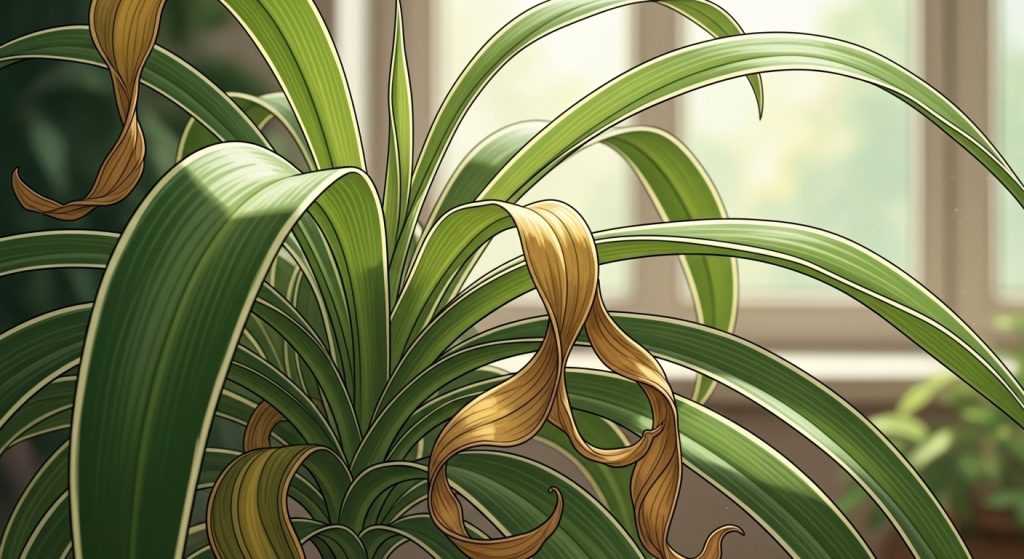
I was rushing around the studio, mentally juggling my day’s tasks, when I paused by the pot to water her. That’s when I really looked. Not the quick glance we give our plants when we’re thinking about something else, but the kind of looking that actually sees.
Those curled edges weren’t just random. They were her way of saying “I’m thirsty, but also maybe getting too much direct light.” The yellowing of one lower leaf whispered to me, “I’m working hard to stay healthy, but I need you to notice what’s happening here.”
Plants have been speaking to us all along. Sometimes we just forget how to listen.
The Signals We Miss
Every plant in our space is constantly communicating. The way leaves reach toward light sources. How stems lean and stretch. The texture of soil and the smell when it’s been too wet or too dry for too long.
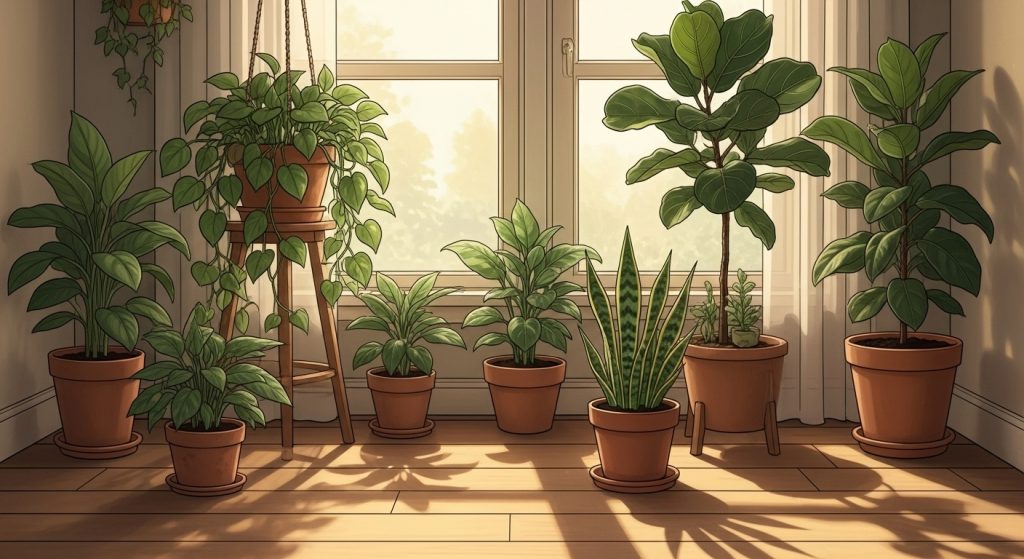
My pothos drapes herself differently when she needs water. Her normally cascading vines become less graceful, more droopy, like she’s too tired to put on her usual show. When she’s happy, her leaves shine and perk right up.
The spotted begonia in my living room is the most dramatic communicator of all. Too little water and she drops a leaf in protest. Too much and she gets brown spots like freckles of frustration. Move her to a different corner and she sulks for days, making her feelings known through the droopiness of her leaves and stems.
But here’s what I’m learning: These same signals exist in us.
Reading Our Internal Weather
We have our own versions of curled edges and drooping stems. The way our shoulders creep up toward our ears when we’re stressed. How our breathing becomes shallow when we’re overwhelmed. The heaviness in our chest when we’re seeking connection, or the restless energy that says we’ve been sitting too long.
Just like plants, our bodies are constantly giving us information about what we need. The trick is developing the same patient attention we give to our plant friends.
When my monstera’s soil is dry two inches down, I don’t judge her for being too needy. I simply water her.
When my heart feels dry from too much isolation, I can offer myself the same gentle care. Maybe a phone call to a friend. Maybe just stepping outside and jumping on my skateboard for five minutes to see life from a different angle.
The Practice of Paying Attention
This morning, after really looking at my spider plant, I tried something new.
I stood in front of my bathroom mirror and looked at myself the way I’d just looked at her. Not the quick glance to check if my hair was behaving, but the kind of looking that actually sees.
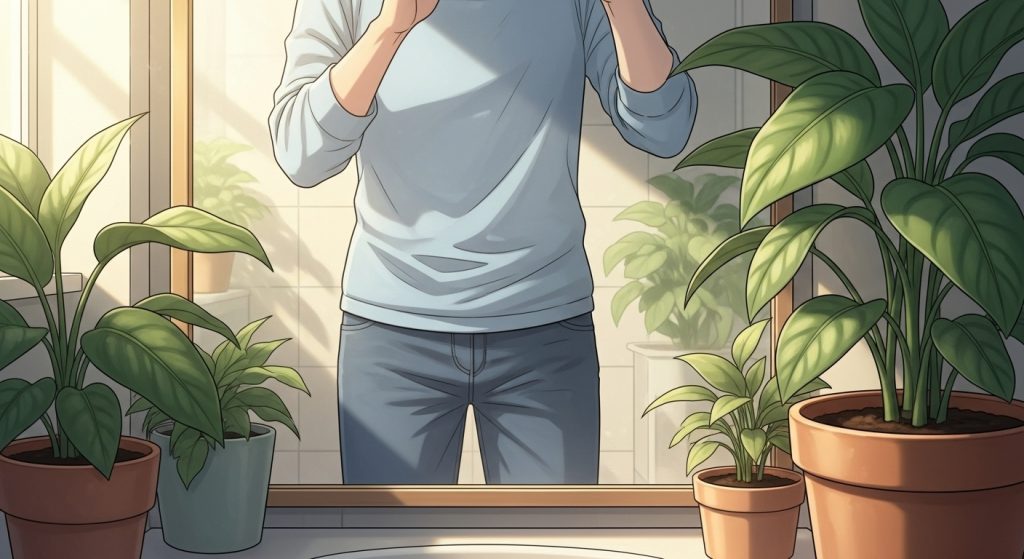
What was my body trying to tell me?
My eyes felt tired, not just from sleep but from too much screen time. My jaw was tight from clenching it during yesterday’s difficult conversation. My shoulders were holding stress like my plants hold water in their leaves.
Instead of rushing into my day, I took thirty seconds to respond to what I noticed. Rolled my shoulders back. Took three deeper breaths. Made a mental note to step outside for a short skateboard ride, just like I moved my spider plant away from the harsh afternoon sun.
The Art of Gentle Response
Plants don’t need dramatic interventions to thrive. Usually, it’s the small, consistent adjustments that make the difference. A little less water. A turn toward better light. Fresh soil when the old becomes depleted.
Our emotional needs work the same way. We don’t always need major life changes, lengthy therapy sessions, or a three-month retreat. Sometimes we just need to notice that we’re getting too much of one thing and not enough of another.
Maybe we need to practice less harsh self-criticism and more gentle encouragement. Less constant stimulation and more quiet space. Less doing and more simply being in the moment as it arrives.
Growing Together
The beautiful thing about plants is they’re patient teachers. They show us that growth isn’t always visible or dramatic. Most of the important work happens quietly, in the soil, in the roots, in places we can’t see.
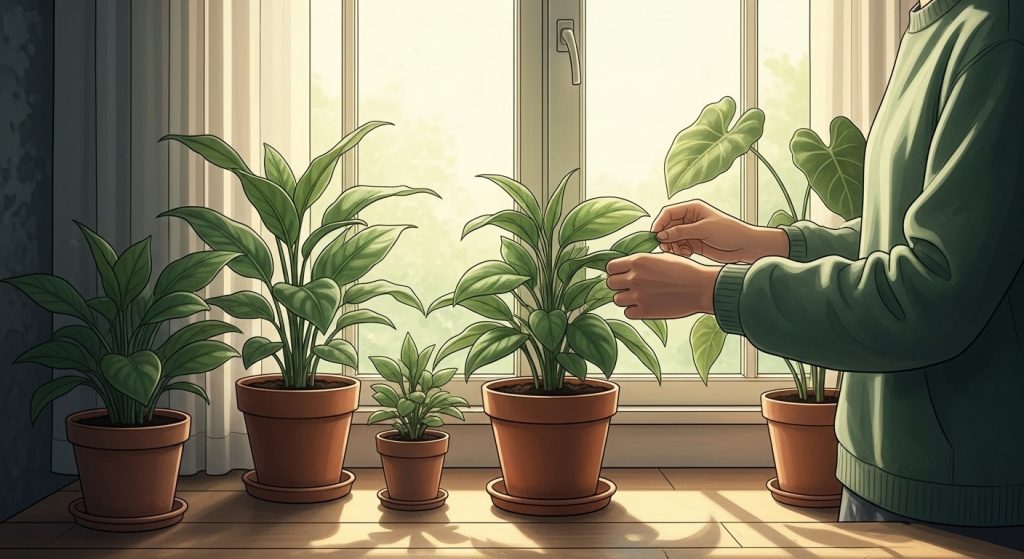
They remind us that needing care isn’t weakness. It’s just nature. Even the strongest oak tree needs water, sunlight, and good soil to flourish.
Tonight, I’ll check on my spider plant again. Give her a little water, and adjust the lighting she is getting. I’ll check in with myself too, asking the same quiet question:
What do you need to flourish?
The conversation between us and our plants has been happening all along. We just need to remember that we’re both speaking the same language. The language of care, attention, and gentle tending.
What messages are your houseplants sharing with you today? Have you noticed any patterns between their needs and your own? I’d love to hear about the quiet conversations happening in your garden.
Be first to get notified when new seeds arrive in the garden! As a fellow gardener, you can get the latest updates straight to your inbox and join the community of gardeners all working on our garden inside. I am not interested in spam, only growth.
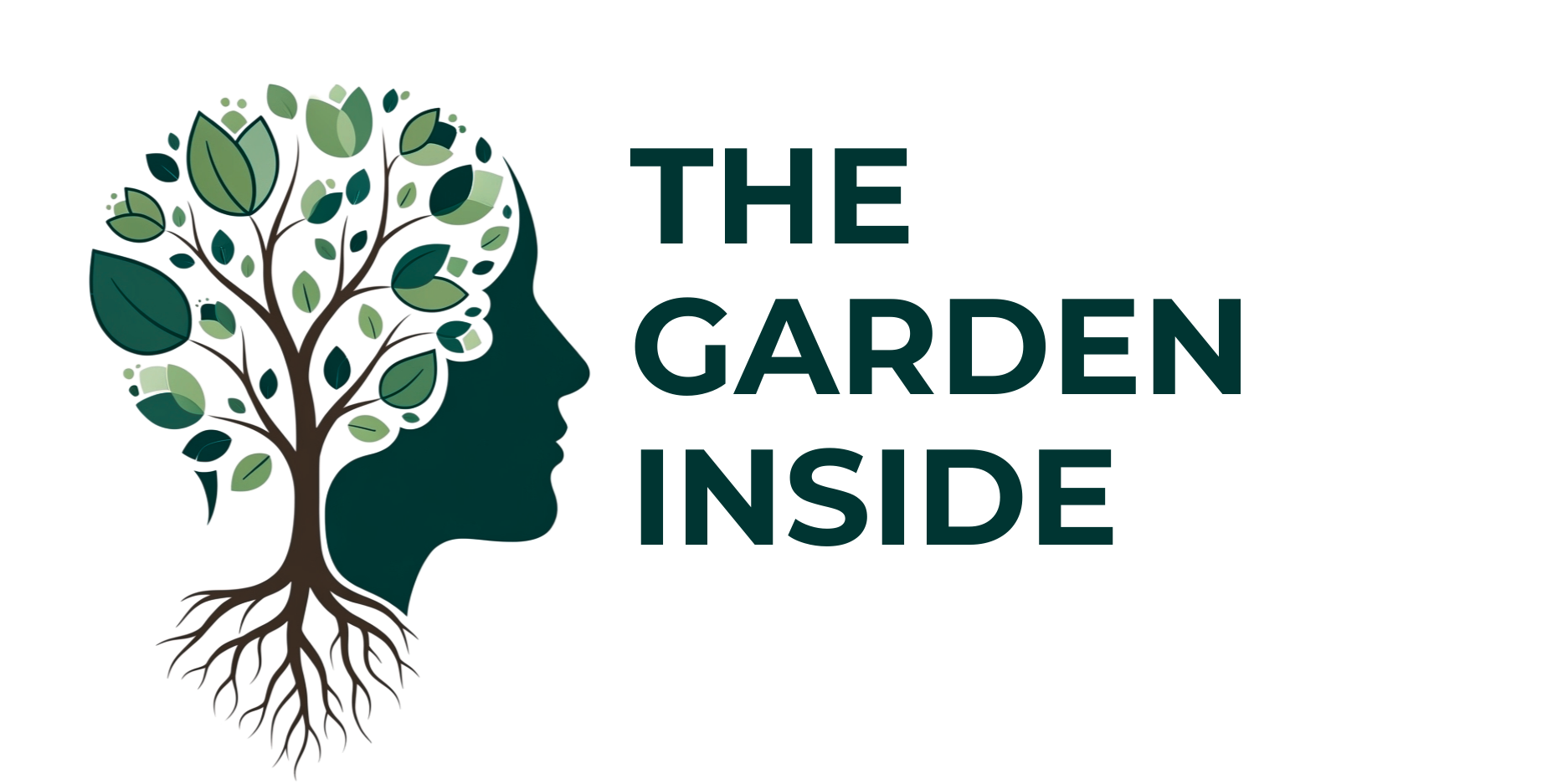
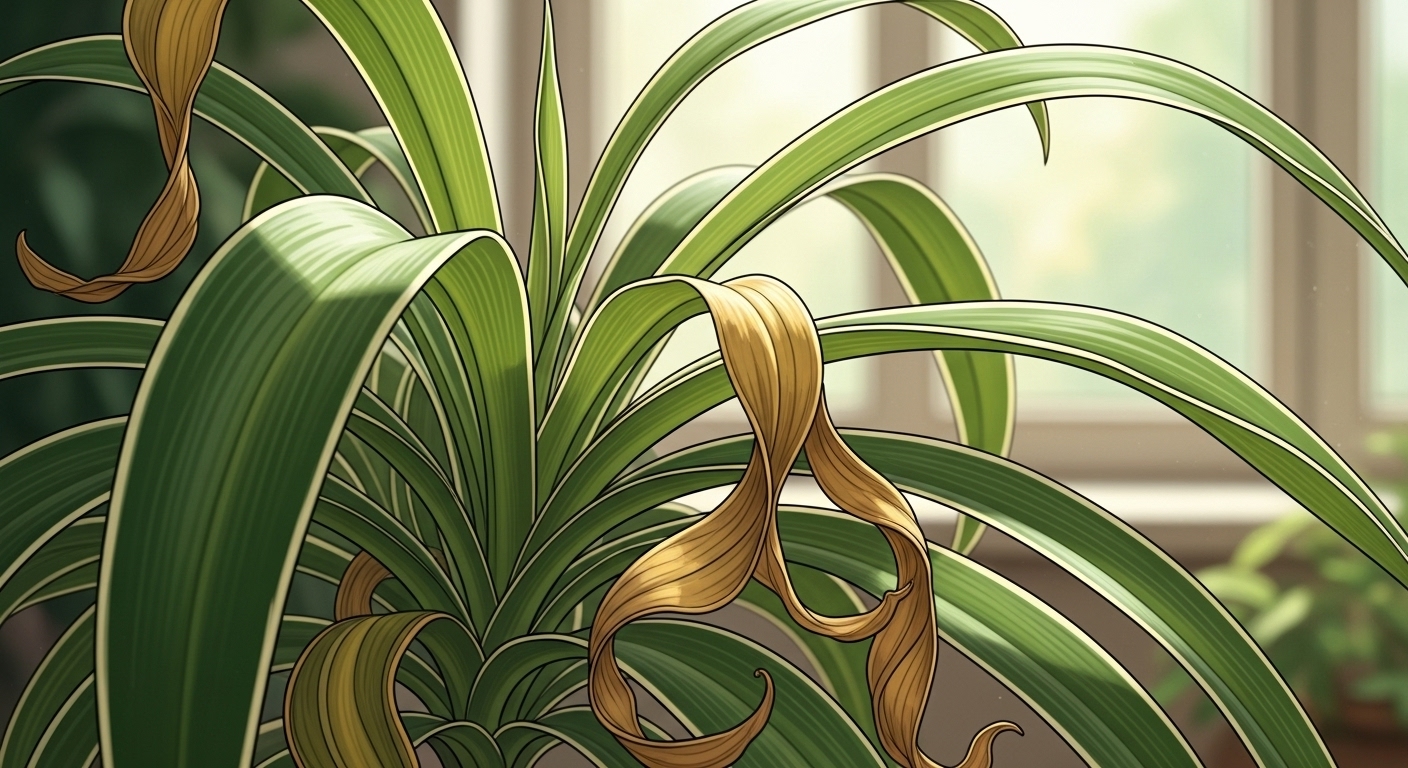
Leave a Reply